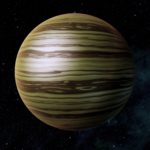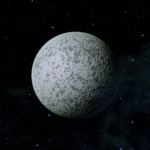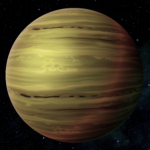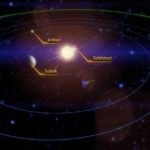System Specs:
- Stellar Mass: 0.92 Sol Masses
- Stellar Class: G
- Luminosity: N/A Sol
- Planets: 5
- Moons: 2
- Asteroid Belts: 0
- Asteroids: 0
- Objects: 0

The system’s gas giants have mediocre resources while the terrestrial worlds are resource-rich but economically poor due to civil war. The Anhur Rebellions was waged all over Amun, which resulted in the end of slavery throughout the system and the emergence of Eclipse as local heroes for aiding the victors.
–
Planets Directory:
- Sekhmet
- Sobek
- Anhur
- Neith
- Bast
–
Sekhmet:
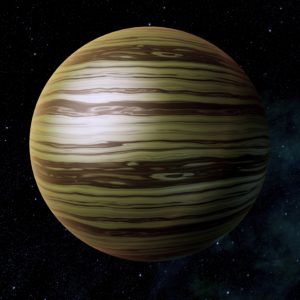
- Orbital Distance: 0.4 AU
- Orbital Period: 0.3 Earth-years
- Keplerian Ratio: 0.711
- Radius: 38,347 km
- Day Length: 9.0 Earth-hours
- Atmospheric Pressure: N/A atm
- Surface Temp: N/A °C
- Surface Gravity: N/A g
- Mass: N/A Earth-masses
A hydrogen-helium gas giant believed to have entered Amun’s system within the last billion years, Sekhmet was the site of an important battle in the Anhur Rebellions. When the Eclipse mercenary company sought to capture the refueling stations to deny the rebels supplies, a fighter wing hiding in Sekhmet’s rings ambushed them. Eclipse suffered heavy initial losses but destroyed two rebel carriers and forced them to retreat into FTL. This was considered the “high water mark” of the rebellion: at no point after the battle of Sekhmet did the rebels have a victory.
Today Sekhmet is home to refueling stations and a small war memorial in orbit at the planet’s L5 Lagrange point.
–
Sobek:
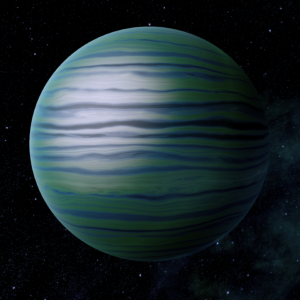
- Orbital Distance: 0.8 AU
- Orbital Period: 0.7 Earth-years
- Keplerian Ratio: 1.045
- Radius: 72,530 km
- Day Length: 12.4 Earth-hours
- Atmospheric Pressure: N/A atm
- Surface Temp: N/A °C
- Surface Gravity: N/A g
- Mass: N/A Earth-masses
- Satellites: > 1
Sobek is a hydrogen-nitrogen gas giant believed to be an extrasolar capture. Its low-G moons were the sites of many batarian labor camps during the Anhur Rebellions, generating raw materials for the war. When the slaves were finally liberated by Eclipse the mercenaries found abysmal conditions, including whole camps that lacked mass effect fields to keep the gravity at habitable levels. The widespread bone loss among the slaves was part of their masters’ final degradation — it would cripple them if they ever left for a standard-gravity world.
The plight of the slaves soon garnered galactic media attention, and several charities sprang up to pay for their physical therapy and find them gainful employment. Eclipse mercenaries, normally reviled for their cutthroat tactics and criminal employees, found themselves painted as heroes. The mercenary company still retains an office on Sobek’s moon Heqet, out of nostalgia as much as a business strategy.
–
Anhur:
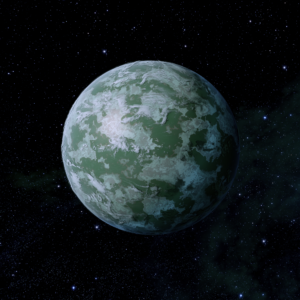
- Orbital Distance: 1.7 AU
- Orbital Period: 2.2 Earth-years
- Keplerian Ratio: 1.015
- Radius: 6,829 km
- Day Length: 18.0 Earth-hours
- Atmospheric Pressure: 0.6 atm
- Surface Temp: 7 °C
- Surface Gravity: 1.3 g
- Mass: 1.479 Earth-masses
- Colony:
Capital: New Thebes, founded 2165, population 208,587,000
A garden world with heavy populations of humans and batarians, Anhur was home to one of the ugliest violations of sapient rights in modern human history. A consortium of corporations and corrupt politicians, fearing batarian economic competition due to their custom of legal slavery, passed a resolution that abolished the minimum wage — effectively relegalizing slavery on a human-dominated world.
Opponents of the motion quickly turned to activism and violence. A civil war erupted, as one side sought to end slavery throughout the system and another, primarily batarian faction called the Na’hesit sought to keep the slaves they had. The Anhur Rebellions raged from 2176 to 2178. The Na’hesit had a significant advantage in ships, labor, and weapons, forcing the Anhur militias to hire mercenary companies to even the odds. In the end, the abolitionists won out, though at the cost of much of their infrastructure. Though Anhur today still has significant natural wealth, it is economically depressed, save for the reconstruction industry.
–
Neith:
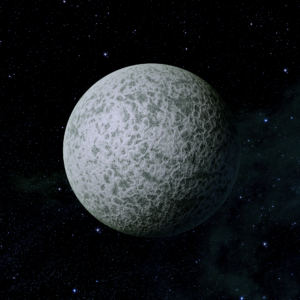
- Orbital Distance: 3.4 AU
- Orbital Period: 6.3 Earth-years
- Keplerian Ratio: 0.99
- Radius: 7,008 km
- Day Length: 54.7 Earth-hours
- Atmospheric Pressure: 0.7 atm
- Surface Temp: −25 °C
- Surface Gravity: 1.4 g
- Mass: 1.678 Earth-masses
- Satellites: 1
Cold and dry, Neith has a thin nitrogen atmosphere and vast salt flats at its equator, which is warm enough for liquid water to pool during the summer period. The revealed salt is collected and sold to sodium-poor planets for agricultural purposes.
During the Anhur Rebellions, Neith was a staging ground for Eclipse ships, and was the site of their first defeat, when enemy Na’hesit surprised and routed them with a superior force. Some wreckage from the battle can still be found on the planet today.
–
Bast:

- Orbital Distance: 7.0 AU
- Orbital Period: 18.6 Earth-years
- Keplerian Ratio: 0.991
- Radius: 18,557 km
- Day Length: 13.6 Earth-hours
- Atmospheric Pressure: N/A atm
- Surface Temp: N/A °C
- Surface Gravity: N/A g
- Mass: N/A Earth-masses
- Satellites: > 1
A small hydrogen-nitrogen gas giant, Bast and its moons served as the Eclipse mercenary company’s fallback position after their defeat on Neith. Once they had gathered their strength they leaked a false position to the Na’hesit consortium to lure them into a trap, which devolved into a pitched battle. Both sides claimed victory. Na’hesit lost more ships but could afford the setback in a way Eclipse could not.
–
–
video

